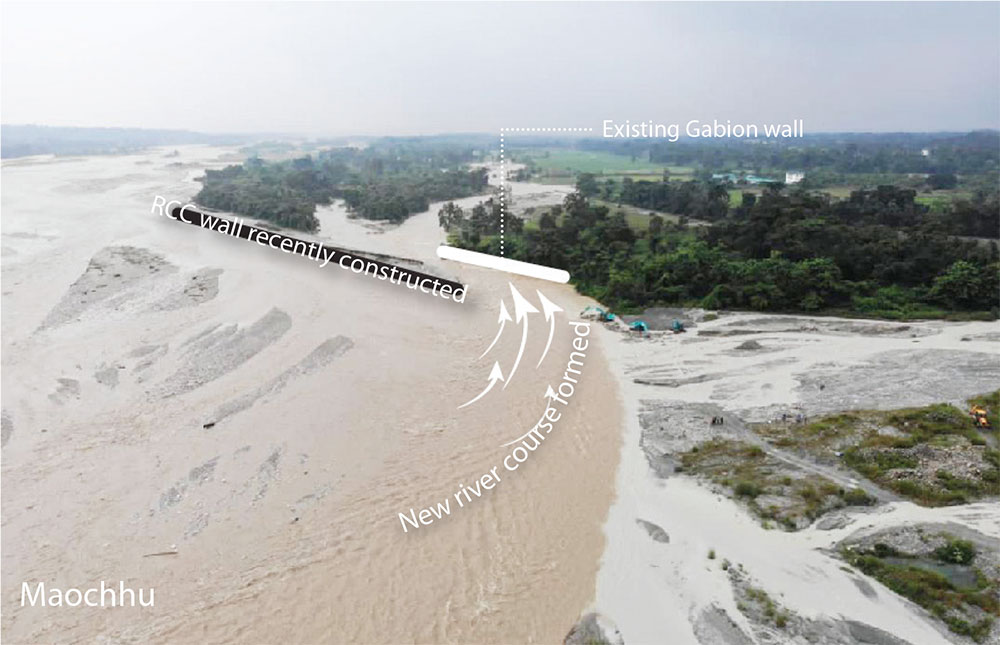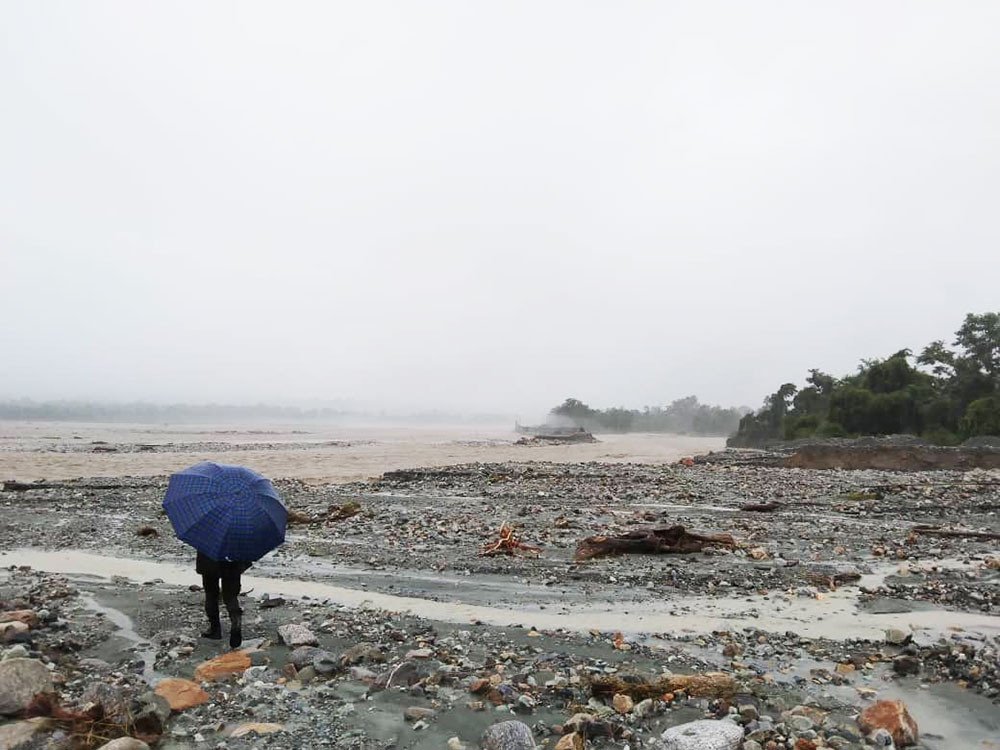Nima | Gelephu
Maochhu has changed its course and is inching closer to properties, residents, and paddy fields located near the river after a flash flood on Wednesday breached a gabion wall constructed along the Shetikhari stream in Gelephu.
The flood also washed away temporary boulder wall connecting the Reinforced concrete wall at the confluence.
The sudden change in river course from near the Shetikhari and Maochhu confluence caused flash flood and stranded more than 20 people in the same location where four soldiers lost their lives in July last year trying to rescue people.
Thromde officials said 21 foresters guarding the porous border at Maochhu and caretakers looking after the thromde water treatment plant were brought to safety using excavators before the flash flood cut-off the access to the treatment plant and three outposts at Maochhu.

Labourers working at a crushing unit were asked to vacate the site following notification from National Center for Hydrology and Meteorology on flash flood, landslides and riverine floods.
Gelephu thromde used more than 15 truckloads of boulders at Shetikhari and Mao Chhu confluence to divert the river back to its usual course on Wednesday, but the boulder walls were washed away yesterday.
Gelephu thrompon, Tshering Norbu, said that river hit the weakest point after it changed its course. “The water force is erratic and the change in course is unpredictable.”
He said it could be because of the heavy rainfall in the higher mountains. “We tried to protect the course and divert the river to its normal course.”
According to the thrompon, thromde would be constructing another 150m reinforced concrete wall (RCC) connecting 300m long RCC wall, which was completed in April this year. The 300m wall was built at the cost of Nu 25 million.
He said the RCC wall stands tall and there are no issues with it. “We would complete the RCC wall before summer next year and it would be connected to a safer point.”
Pelrithang residents, however, said that leaving the RCC wall incomplete, halfway in the middle of the Shetikhari and Maochhu confluence could have triggered the flash flood.
A resident of lower Pelrithang said the floodwater could have run from its regular course if the wall was build from the point where Shetikhari stream joins Maokhola. “The wall was left halfway,” he said.
Thrompon said that the RCC wall could not be completed upstream because of budget constraints.
“We prioritised and have approved budget for the wall this time. We are yet to ascertain the damage to the water treatment plant. We hope the residents would understand our position at this time,” Tshering Norbu said.
The construction of the 150m long RCC wall is expected to cost Nu 12 million and thromde has approved Nu 10 million for the wall.
Meanwhile, officials have asked the residents residing downstream, close to Maochhu, to move towards a safer place for another 48 hours until the weather forecast improves.
Continuous rainfall for three days has also swollen the seasonal stream of Shetikhari, Dawalakhola, and Jogikhola in Gelephu gewog.
A temporary house located close to the drain and the roads were flooded with rainwater.
House owner, Sonam Delkar said the drinking water pipes kept inside the drainage caused the overflow. “De-suups came and took the pipe out of the drain. It helped. We requested gewog officials to keep the drain clear earlier,” she said.
Prem P Katel from lower Pelrithang said he and his neighbours had to move out of home at around 2am for the past two days when it starts raining, fearing floods.
“It has become risky for people. We have been facing the problem for a long time,” he said. “Allowing crushing unit at the source of the stream and lack of proper taming along the stream causes the flood.”
He also said floodwater spread outside its course because the dredging was not properly done. “Removing boulders and stones from riverbed has increased the risk of flood.”
Edited by Tasha Dema


